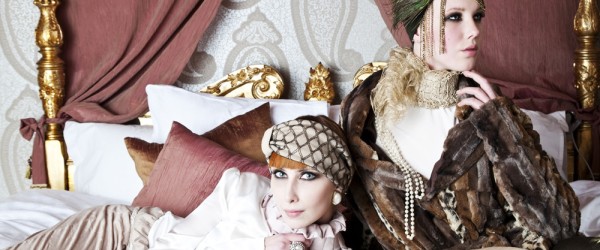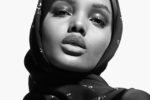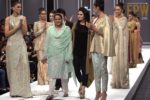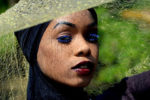Swedish fashion designer Iman Aldebe is leading a modest fashion revolution. Aldebe has been celebrated for her designs by both Muslim and non-Muslims who choose to wear her signature pieces, however her success hasn’t come easily. The barriers she has faced and reasons for her eventual success may give us an indication as to the extent to which women are still predominantly judged based on their appearances over their abilities- factors which could be a more disturbing indicator of why Muslim women seek alternative ways to fit in with society.
Aldebe’s first experience of appearance-based discrimination was when she wore her headscarf whilst applying for a position at a fashion boutique. She was told that the job was taken so she sent in my friend, who was not wearing hijab. When she asked about the position, they asked her how soon she could start. She also was told by a job recruiter that it was ‘probably better for me to take off my hijab’. Aldebe eventually got a part-time job in a boutique – but first she made some adjustments to the way she wore her headscarf. “I decided to change [the way I wore it], from wrapping it around my face to tying it all at the back like a traditional African head wrap. I went to the interview and I was accepted”. It is testament to Aldebe that she has bounced back from this judgement to become such a successful leader in modest fashion. However, we need to be careful: fitting in to what is deemed acceptable can raise a dangerous precedent. What happens when you are faced with discrimination? Do you adjust yourself to the underlying exclusion? What if you decide not to change how you wear your clothes? What if you can’t change aspects of your appearance, such as skin colour? Though some Muslim women can change how they look to “fit in” better, the reasons requiring them to do so need to be considered as seriously as the reasons for why certain looks are considered acceptable and others aren’t. It indicates something deeper amiss within western society and how women choosing to wear the headscarf are viewed: you look different but not too different, Muslim, but not too Muslim.
This highlights that conforming and blending in are two main issues Muslim women face as they look for acceptance in western society. It is a shame that the recent successes of European modest fashion lines could potentially stem from women’s fear of standing out and being recognised as Muslim. The rise in Islamophobic sentiment directed to Muslim women who choose to cover further reinforces this point. Unfortunately, this isn’t looking as though it will get easier any time soon, following the recent attacks carried out in Paris.
The labelling of women from their clothing choice alone is apparent not only for Muslim women. More needs to be done to highlight the inequality of a society constantly critiquing women because of their clothes choices, whether religious or personal. Conformism, to look a certain way, is also detrimental for minorities in society who have aspects of their appearance that they are physically unable to change, such as the colour of their skin. Instead of celebrating conformity, we should be asking bigger questions such as why do people still think it is acceptable to judge people on their appearance as opposed to viewing them as individuals with unique and varying sets of beliefs and aspirations?
I celebrate Aldebe’s career in fashion and haute couture. I commend her ability to give women options to express themselves through fashion, but I can’t help but wonder about those who can’t conform and those who feel too scared to do anything but.





1 Comment
[…] Muslimah Media Watch article, ‘Is the rise of European fashion based on conformity & fear? by Shereen Malherbe. […]